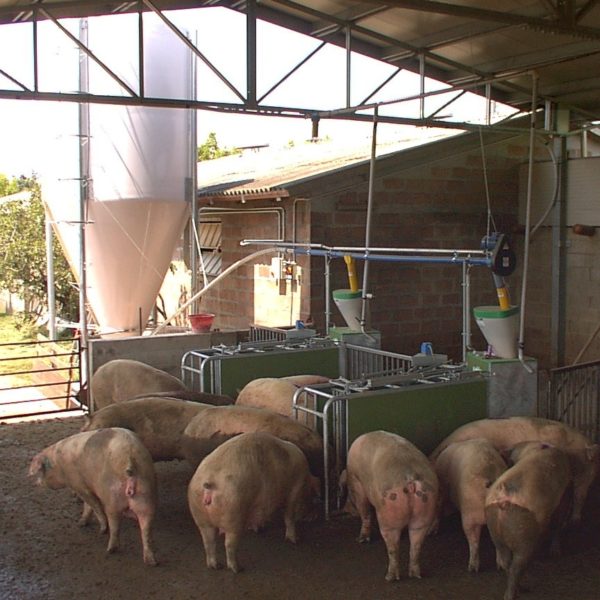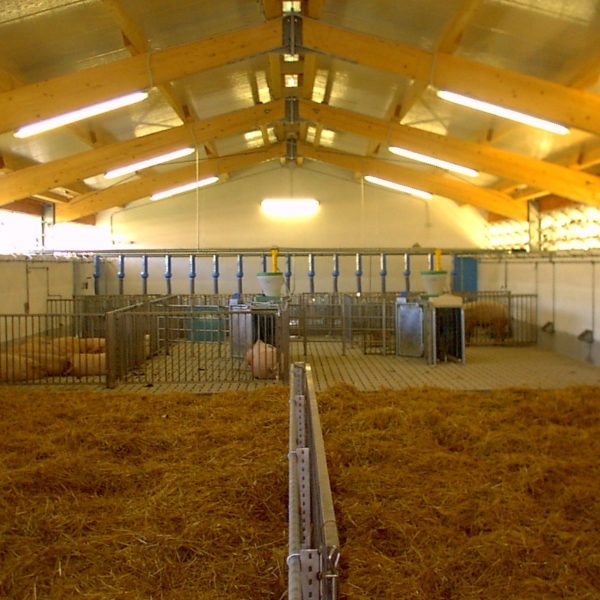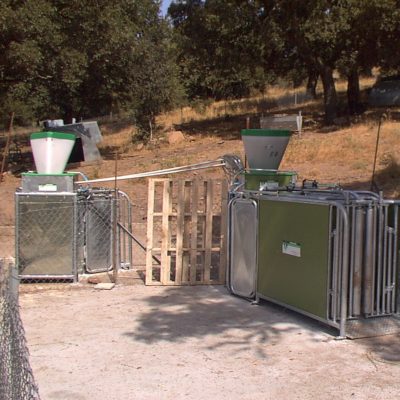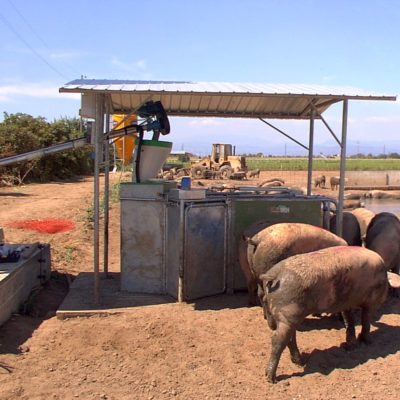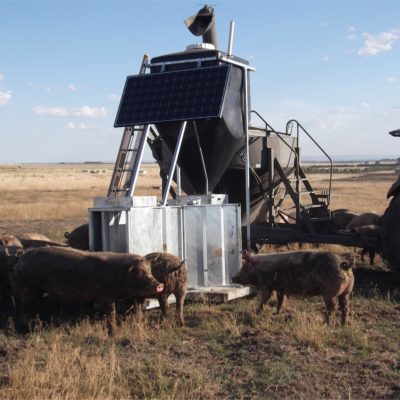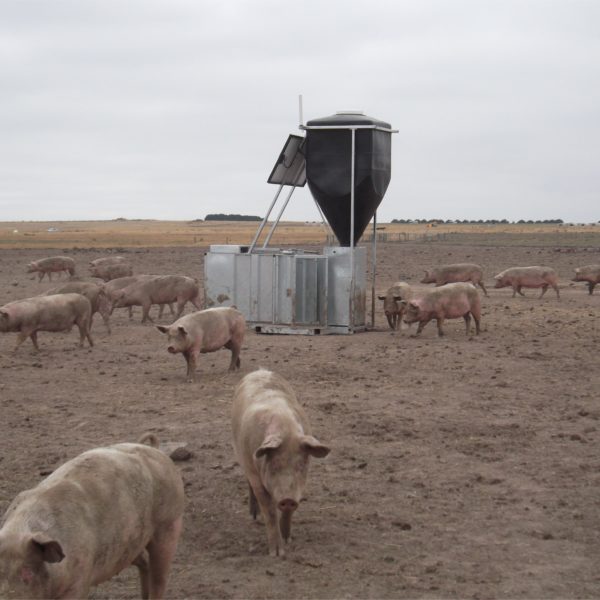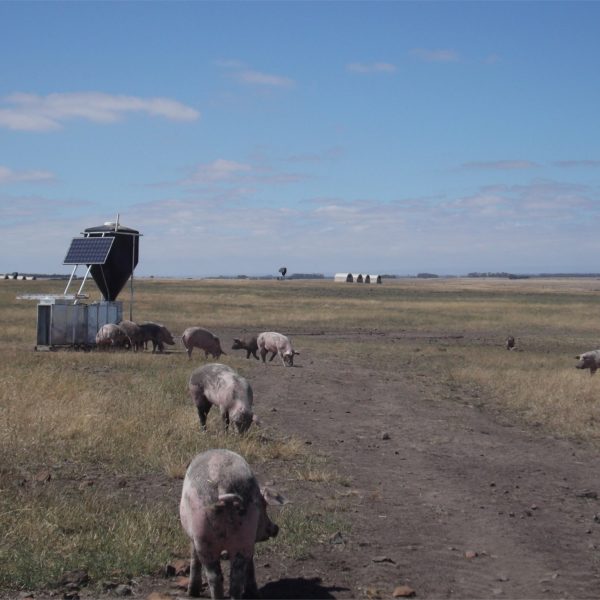Today a large part of European breeders know that stabling sows in group presents a number of considerable advantages: simplicity of construction and consequent reduction of fixed costs; freedom of movement of the sow, which allows an important functional exercise and the search for the most comfortable areas inside the box.
Breeding sows in groups, associated with individual electronic feeding, puts animals in a situation of greater well-being. Breeders who have conceived this stabling system, even starting from different problems and assumptions, have generally found that it is the ideal solution.
Advantages:
This farming technique has several advantages, in particular the possibility of determining the ration for each cattle, in relation to its size, age, state productive state, etc…
Allowing muscular exercise to sows has the effect of avoiding prolonged labour, promoting the birth of piglets of considerable weight, almost cancelling the birth of mummified piglets. A very important matter is the cessation of foot and joint lesions.
In addition, the system is adaptable to any type of building, whether indoors or under canopies. Generally it is necessary only to equip the existing building with appropriate interior dividers and properly position the self-feeders to see it working at its best.
Thanks to new wireless technologies and the use of solar panels, it is possible to automatically feed with computerized system and also sows bred in semi-wild state in areas with no electrical connection.
IThe total cost of a shelter for pregnant animals, is less than the cost of a building specially constructed for tie stall stabling. There is also the possibility of keeping sows in not closed buildings and however without internal microclimate control: no fans and heating, with all their costs.
Some data:
In Italian farms that use our system, we have an average of piglets weaned at 7.4 kg. They reach the weight of 30 kg in 70 days. The average daily gain is around 0.56 kg with a conversion ratio of 1.63. The yearly sow deliveries are about 2.35. The percentage of stillbirths is 2.6%. Live births by delivery 11.8. Died in the delivery room 8.6%. Number weaned per litter 9.85. Number of piglets weaned per sow each year 23.1.
A study was conducted at the Institute of Rosmalen (Netherlands), which compared three groups of breeding systems, free access cages, trickle feeding (slow feed distribution), and ESF (electronic feeding for sows), and an individual breeding system (cages).
The economic evaluation quantified the following aspects: use of food, use of water and costs associated with the accommodation of manure, use of energy, weaning-insemination interval, labour demand and investment required.
The table summarizes the results found.
|
Cages |
GFree access cages |
ESF |
Trickle feeder |
|
|
Medium no. of sows |
86 |
85 |
89 |
88 |
|
Investment 170 sows (USD/sow) |
900 |
1.160 |
885 |
940 |
Source: Comparison of 4 farming systems for sows Rosmalen Institute, Report P 1,171
How it works
In group stabling with individual ,each sow is equipped with a transponder that allows the system to recognize it. This transponder, which can be inserted under the skin, or placed in the ear as an ear tag, receives a signal from a transceiver unit located in the self-feeder and reflects it changed. The self-feeder is a steel hot-dip galvanized or stainless steel cage where the sow receives its own individual ration set on the computer, protected from the aggression of other animals in the group.
Our system allows a wide range of solutions: pelleted or flour feed, dry or with water addition in the desired percentage. Possibility to dispense the meal at once or in several stages. All this can be individually programmed for each cattle.
The gates of the feeding station (ESF) are all driven directly by the animal which, upon entering, operates the levers that lock the doors, making it impossible for other animals to enter.
The computer provides a list of all the animals that did not eat the meal, or part thereof, giving the opportunity to the breeder to check what is the nature of the problem.
After eating the meal, the sow, that can not lie down in the station because of a system that prevents laying down and disturbed by the inner gate, it goes out from the side gate. The computer can automatically store the animal selection date for gestation or imminent delivery inspection. In this case, when the computer recognizes the animal to select, it blocks the normal exit gate and opens the “selection gate” which introduces the animal in a box on the side, where the farmer can easily perform checks on the animal or take it to bring it to the delivery room.
Each feeder can serve 40/60 sows, if the group is larger, it is necessary to increase the number of self-feeders to maintain a constant animals/station ratio. Our computers monitor, depending on the model, from 12 to 64 self-feeders and from 500 to 3000 animals.
It can be possible to provide stabling only on grating, only on straw bedding or feeding area on grating and resting area on straw.
Placing a box with the boar in the gestation area it is possible to record the frequency with which sows go in front of the boar (boar visits). This data combined with the absence of feeding behaviour, is an important element to assess the sow estrus state.


 Italiano
Italiano Russian
Russian